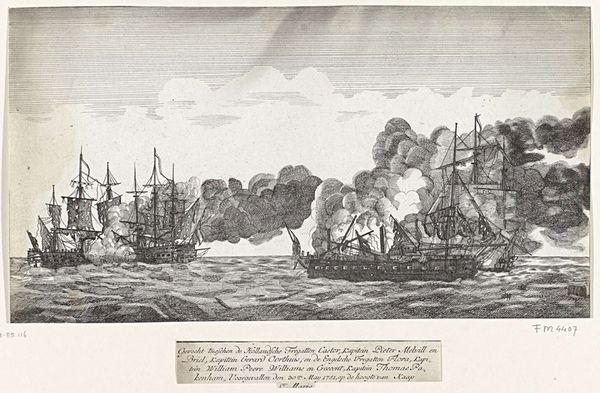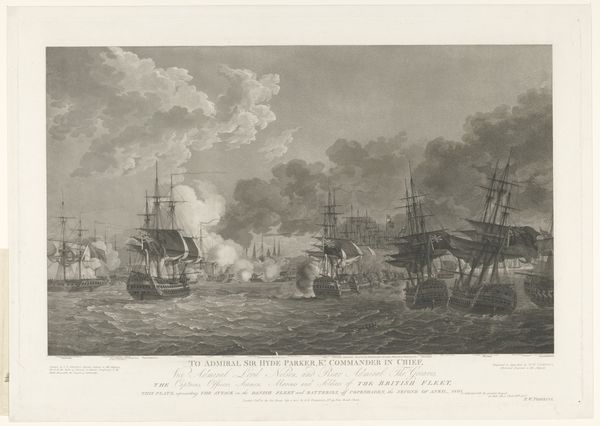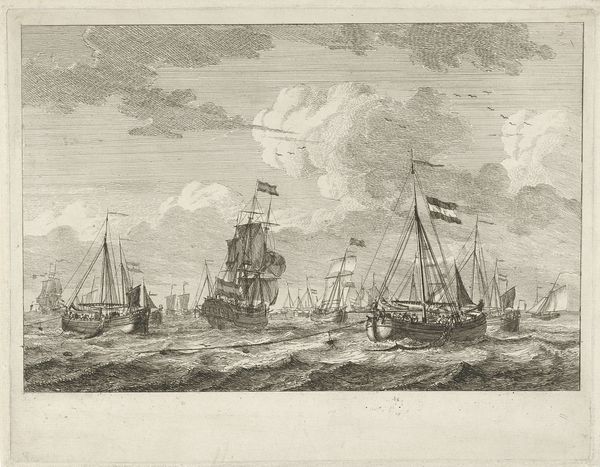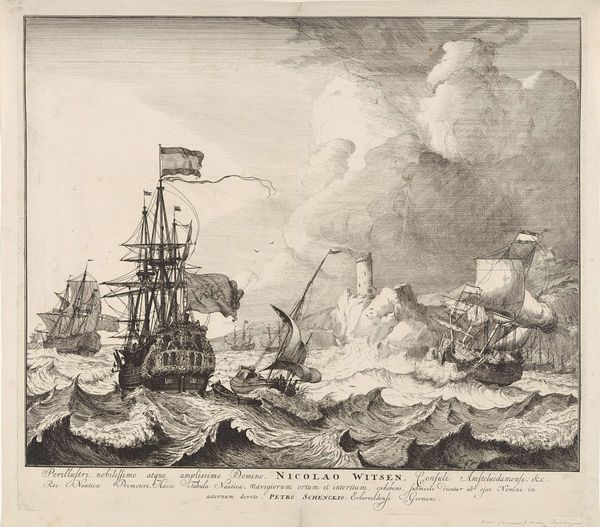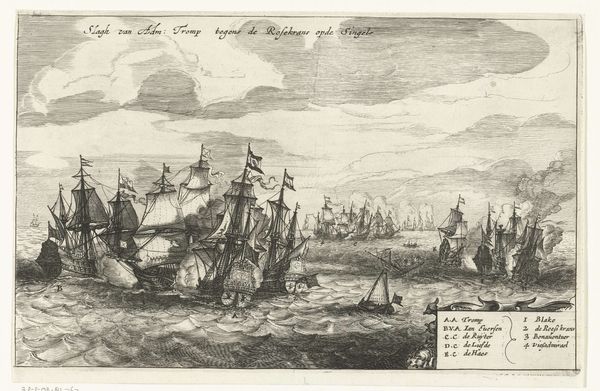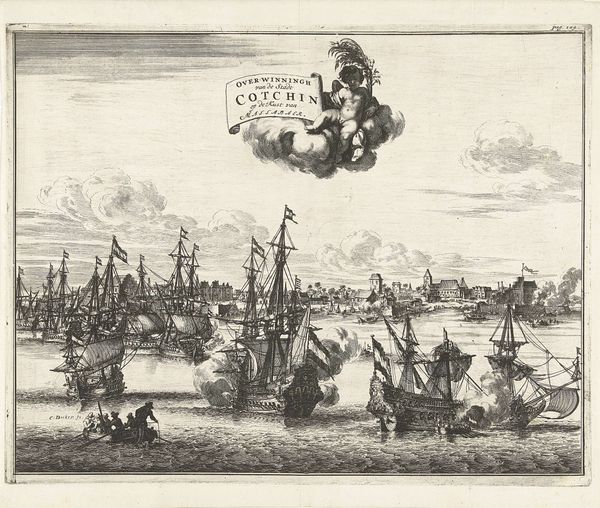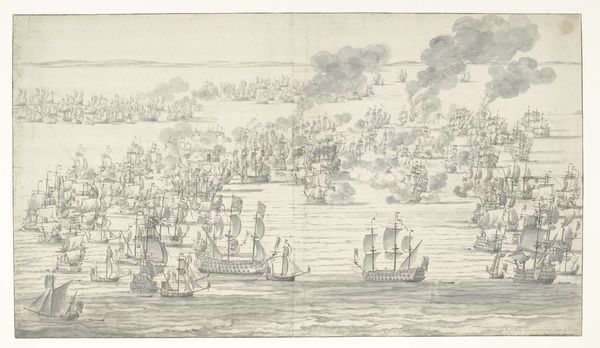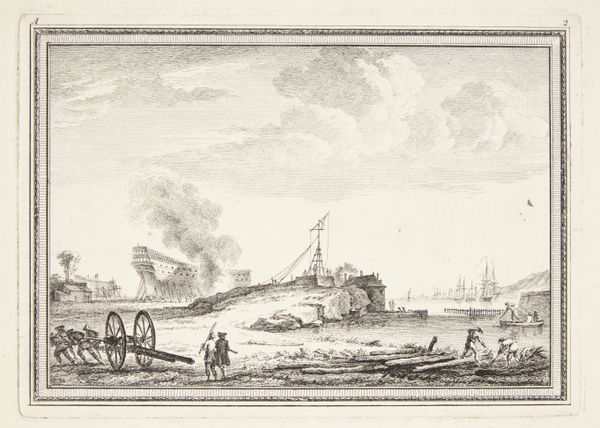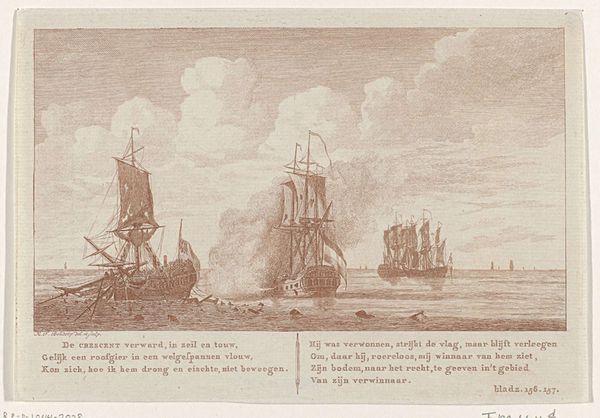
Zeeslag bij Lowestoft en het ontploffen van de Eendracht, 1665 1690 - 1692
0:00
0:00
thomasdoesburgh
Rijksmuseum
print, engraving
#
baroque
#
dutch-golden-age
# print
#
old engraving style
#
landscape
#
cityscape
#
history-painting
#
engraving
Dimensions: height 168 mm, width 280 mm
Copyright: Rijks Museum: Open Domain
Curator: What strikes me first is the sheer chaos. It’s a whirlwind rendered in monochrome—ships ablaze, plumes of smoke, a fractured vessel listing dramatically in the foreground. There's something operatic about it. Editor: That’s right, the scene depicted here is a representation of the Battle of Lowestoft from 1665, part of the Second Anglo-Dutch War. It's rendered in an engraving created between 1690 and 1692. We have it here at the Rijksmuseum, where it gives insight into a particularly turbulent period in Dutch maritime history. Curator: Knowing that doesn't make it any less apocalyptic, honestly. It’s a detailed, almost clinical depiction of utter destruction. The precision of the lines somehow amplifies the violence, you know? I imagine the artist trying to impose some order onto a memory of pure pandemonium. Editor: Indeed, engravings like these served a crucial public function. They disseminated visual information, shaping public perception of events and solidifying national narratives. Think of it as early modern propaganda, carefully crafted for maximum impact. Consider how this image amplifies Dutch courage amid conflict. Curator: I am definitely picking up that "Dutch courage." It almost romanticizes naval warfare. All that glorious smoke and fractured masts... Though, there's a certain solemnity too. See how the defeated ship seems to be sinking right out of the frame, leading the viewer’s eye into that smoky void. A visual metaphor for loss. Editor: Absolutely, and that’s part of the appeal. These prints, mass-produced as they were, tapped into both national pride and a morbid fascination with warfare. The added text helps solidify an interpretation: it isn’t simply destruction; rather, the narrative highlights key actions from admirals within an overwhelming moment in the Netherlands’s relationship with England. Curator: I suppose this artwork captures a nation grappling with its identity on the high seas, rendered through fire and steel. Now that’s what you call making waves. Editor: Precisely. An evocative and enduring representation of power, conflict, and the art of historical storytelling.
Comments
No comments
Be the first to comment and join the conversation on the ultimate creative platform.
